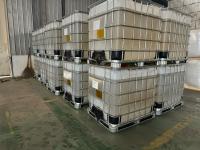Polyamines are organic compounds containing multiple amino groups. They have a wide range of applications in various fields, mainly including the following aspects:
-
Cell Growth and Proliferation Regulation: Polyamines are essential for cell growth and division. They interact with nucleic acids, proteins, and other biomolecules, influencing DNA replication, transcription, and protein synthesis. For example, in rapidly dividing cells such as cancer cells and embryonic cells, the content of polyamines is relatively high. By regulating the level of polyamines, it is possible to affect the growth and proliferation of cells, which provides a potential target for the treatment of cancer and other diseases.
-
Drug Delivery Systems: Polyamines can be used to modify drug carriers to improve the targeting and efficiency of drug delivery. For example, polyamine - modified liposomes or nanoparticles can better bind to specific cell surface receptors, enhancing the uptake of drugs by target cells and reducing the side effects of drugs on normal tissues. In addition, polyamines can also form complexes with nucleic acids, which is helpful for the delivery of gene drugs.
-
Antimicrobial Agents: Some polyamine - based compounds have antimicrobial properties. They can interact with the cell membranes of bacteria and fungi, causing membrane damage and leakage of intracellular substances, thereby inhibiting the growth and reproduction of microorganisms. This has potential applications in the development of new antimicrobial drugs and the prevention and treatment of infectious diseases.
-
Polymer Synthesis and Modification: Polyamines are important raw materials for the synthesis of polymers such as polyurethanes and polyamides. In the synthesis of polyurethanes, polyamines react with isocyanates to form urethane linkages, resulting in polymers with excellent mechanical properties, thermal stability, and chemical resistance. In addition, polyamines can be used to modify polymers to improve their hydrophilicity, solubility, and other properties. For example, the introduction of polyamine groups into the polymer chain can increase its water - solubility and biocompatibility.
-
Cross - Linking Agents: Polyamines can act as cross - linking agents for various polymers. They can react with functional groups on the polymer chain to form cross - linked structures, which enhance the mechanical strength, heat resistance, and solvent resistance of the polymer. In the field of coatings and adhesives, polyamine - based cross - linking agents are widely used to improve the performance of coatings and adhesives.
-
Flame - Retardant Additives: Some polyamine - based compounds have flame - retardant properties. They can be added to polymers to improve the flame resistance of materials. During combustion, polyamines can form a char - layer on the surface of the material, which acts as a physical barrier to prevent the further spread of fire and the release of flammable gases.
-
Plant Growth Promotion: Polyamines play an important role in plant growth and development. They can promote seed germination, root growth, and plant flowering and fruiting. By spraying or applying polyamines to plants, it is possible to improve the growth rate and yield of crops. In addition, polyamines can also enhance the resistance of plants to environmental stresses such as drought, salinity, and cold.
-
Fertilizer Additives: Polyamines can be used as additives in fertilizers to improve the efficiency of nutrient uptake by plants. They can chelate with metal ions in the soil, increasing the solubility and availability of nutrients such as iron, zinc, and manganese. This helps plants to better absorb these essential elements, promoting their growth and development.
-
Coagulation and Flocculation Agents: Polyamines can be used as coagulation and flocculation agents in water treatment. They can neutralize the negative charge on the surface of colloidal particles in water, causing the particles to aggregate and precipitate. This is effective in removing suspended solids, turbidity, and some organic pollutants from water, improving the quality of water.
-
Wastewater Treatment: In the treatment of industrial wastewater, polyamines can be used to precipitate and remove heavy metal ions. They can form insoluble complexes with heavy metal ions such as copper, lead, and mercury, facilitating their separation and removal from the wastewater. This helps to reduce the pollution of heavy metals in the environment.
In summary, polyamines have diverse and important applications in biological, medical, material, agricultural, and environmental fields. Their unique chemical properties and biological activities make them valuable in many areas, and with the continuous progress of science and technology, the application prospects of polyamines are expected to be further expanded.




